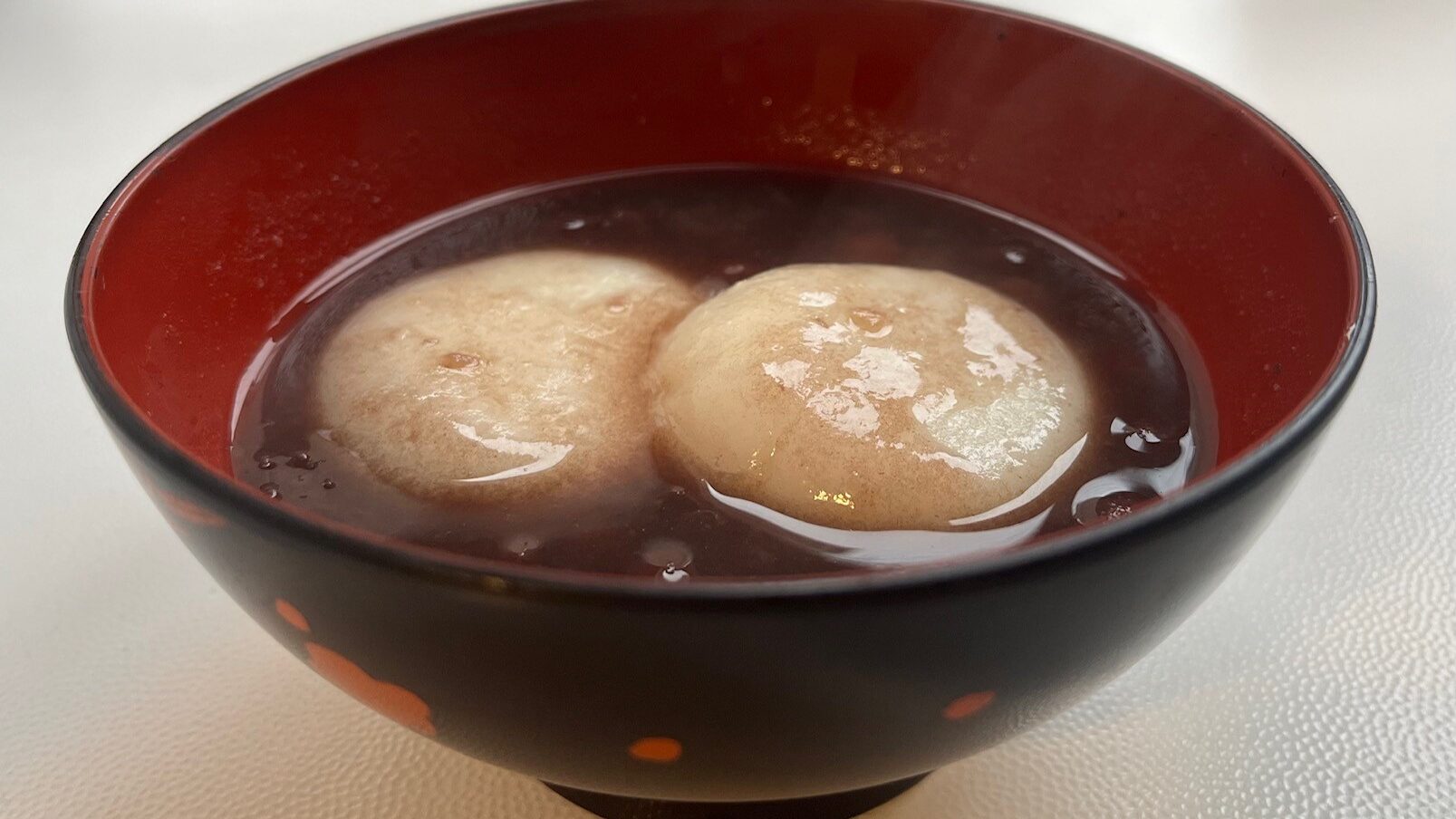
Alright, let’s talk about a New Year’s tradition from Tottori that’s a little different from what you might expect – “Azuki Zouni”! While zouni (New Year’s mochi soup) comes in all sorts of regional varieties across Japan, Tottori’s version often features sweet azuki beans. Yep, you heard that right! It’s a sweet soup with mochi, and it’s a delicious way to start the year. Let’s get into the details!
Dish Name: Azuki Zouni
- Region / Location: Eastern and Central Tottori Prefecture
- Primary Area of Tradition: Eastern and Central Tottori Prefecture
- Main Ingredients: Round mochi (rice cakes), azuki beans
How It’s Eaten / Served
Azuki Zouni is a New Year’s dish featuring round mochi served in a sweet azuki bean soup. There’s a bit of variation in how it’s prepared – some versions have a lot of broth, while others are thicker with more beans. Most people sweeten it with sugar, but you might find a few folks who prefer a slightly salty version. Apparently, the original version was a salty azuki soup, but the sweet version is more common now. It’s worth noting that not everyone in Tottori eats Azuki Zouni; in the mountainous areas, you’re more likely to find zouni with soy sauce or miso broth.
Azuki Zouni is typically eaten on New Year’s morning along with osechi ryori (New Year’s food). The sweetness of the azuki beans pairs really well with the saltiness of the osechi dishes. Azuki beans have long been used in Japan for celebratory occasions, like in sekihan (red bean rice) or anko (sweet bean paste for mochi). They’re considered a lucky food, and Azuki Zouni is a delicious way to celebrate the New Year.
Cultural Background and Preservation
The exact origin of Azuki Zouni is a bit of a mystery, but azuki beans have traditionally been believed to ward off evil spirits because of their red color, which is why they’re used in festive dishes. Zouni itself is a special dish, traditionally made first thing on New Year’s Day using “wakamizu” (the first water drawn from the well in the new year) and a purified fire. It’s considered a sacred food that gives people energy and strengthens family bonds during the New Year celebrations.
Azuki Zouni is similar to what other regions call “zenzai” or “shiruko” (sweet red bean soup with mochi). To make it, you first boil the azuki beans, drain them, and then boil them again until they’re soft. Then, you add sugar to sweeten them. The mochi is cooked separately and added to the azuki soup. While the basic recipe is the same, the seasoning can vary a bit from family to family. In Misasa Town in central Tottori, some people add mochi made with “tochi no mi” (tochi nuts) that are gathered in the mountains.
There are local efforts to promote “Tochi Mochi Zouni” to boost the region and preserve its cultural heritage.
Additional information:
- Zouni (雑煮): A Japanese soup containing mochi (rice cakes) eaten on New Year’s Day.
- Azuki (小豆): Small red beans commonly used in Japanese sweets.
- Osechi Ryori (おせち料理): Traditional Japanese New Year’s food.
- Sekihan (赤飯): Rice cooked with azuki beans, often served on celebratory occasions.
- Anko (餡子): Sweetened azuki bean paste.
- Wakamizu (若水): The first water drawn from the well on New Year’s Day.
- Zenzai (ぜんざい): A sweet azuki bean soup with mochi.
- Shiruko (汁粉): Another name for sweet azuki bean soup with mochi.
- Tochi no Mi (栃の実): Japanese horse chestnut.
The information about regional cuisine featured on this website (Piggy's Grandma of Japan) is summarized and adapted from the Ministry of Agriculture, Forestry and Fisheries of Japan (MAFF) website, "Our Regional Cuisines"Additional commentary is provided based on the unique experiences and perspectives of the site's editors.
The copyright for the original content regarding regional cuisine belongs to the Ministry of Agriculture, Forestry and Fisheries of Japan.
The summaries and adaptations published on this site are intended for informational purposes only. Piggy's Grandma of Japan does not guarantee the accuracy or completeness of this information. For the most accurate and complete details, please refer to the original pages on the MAFF website.

